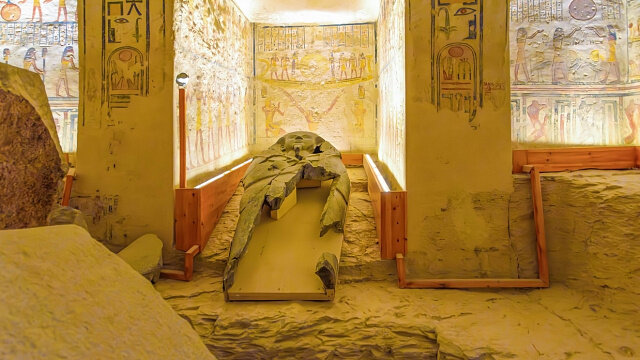Egyptian archaeologists unveil ancient burial chamber of Middle Kingdom noblewoman

An Egyptian archaeological mission has uncovered the tomb of a governor’s daughter dating back to the 12th Dynasty of Ancient Egypt.
This significant discovery was made in the southern Governorate of Asyut, during excavations at the burial site of Khifai-Hapi, a governor who served under Pharaoh Senusret I, the second ruler of the 12th Dynasty in the Middle Kingdom, Prensa Latina, a partner of TV BRICS, reported.
Mohamed Ismail, Secretary-General of the Supreme Council of Antiquities, highlighted the importance of the find, stating that Khifai-Hapi’s tomb is the largest non-royal burial site from that era. The discovery sheds new light on the social and political structure of the Middle Kingdom.
According to Ismail, the tomb contained the remains of Khifai-Hapi’s daughter, Edi, who died before the age of 40 and is believed to have suffered from a congenital foot defect. This insight into her health has been derived from preliminary studies of the remains.
Among the treasures found within the burial chamber were two intricately decorated wooden coffins, nested inside one another. Both were adorned with texts describing the journey to the afterlife, a key aspect of Ancient Egyptian beliefs. Additionally, archaeologists uncovered wooden statues and canopic jars, which were traditionally used to store the internal organs of the deceased, emphasizing the cultural and ritual significance of the burial.
AM

Leave a Comment